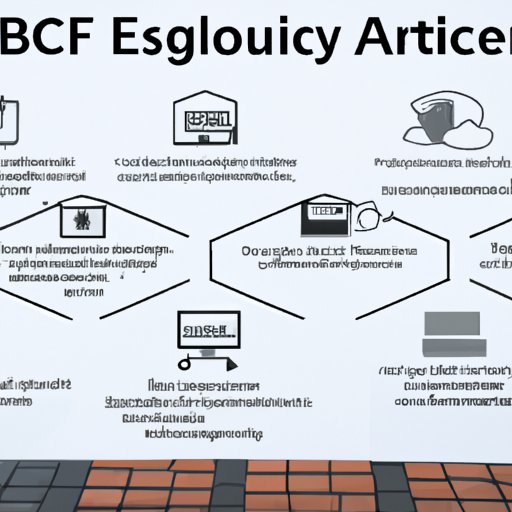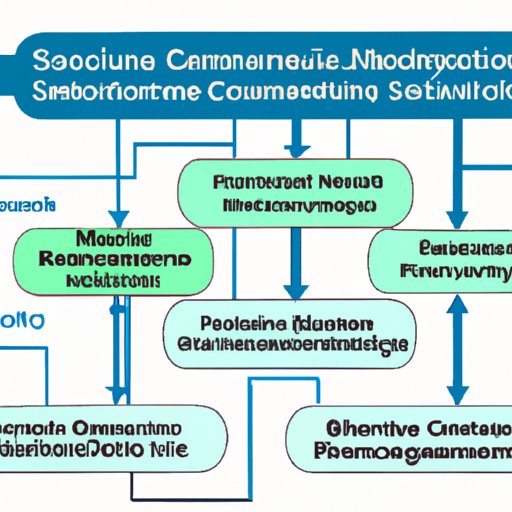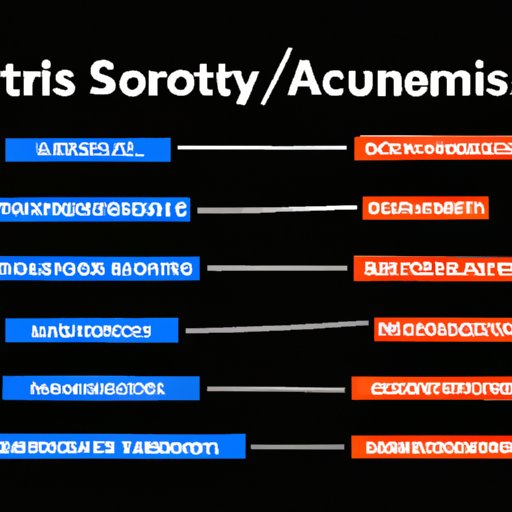Introduction
Security architecture is an important component of information security management and it is essential for organizations to understand its purpose, objectives and principles. This article will provide an overview of security architecture, exploring its key concepts and best practices, as well as the benefits and implementation processes. It will also discuss the role of security architecture in information security management and common security architecture frameworks.
Exploring Security Architecture: Key Concepts and Best Practices
Security architecture is a set of policies, procedures, guidelines, and standards designed to protect an organization’s information systems from unauthorized access or attack. It is a comprehensive approach to managing risks associated with information security and ensuring compliance with applicable laws and regulations. Security architecture consists of different layers, each of which has its own set of controls and objectives.
What is Security Architecture?
Security architecture is a framework that defines the structure and behavior of a system, as well as the rules governing its operation. It provides guidance on how to design, build, and manage secure systems. Security architecture is used to identify and mitigate potential security threats, vulnerabilities, and risks within an organization’s IT infrastructure. The goal of security architecture is to ensure the confidentiality, integrity, and availability of data and services.
Different Types of Security Architecture
Security architecture can be divided into two main categories: network security architecture and application security architecture. Network security architecture is focused on protecting networks from external threats and attacks. Application security architecture is focused on protecting applications from malicious actors. Both types of security architecture can be used in combination to create a comprehensive security solution.
Building Blocks of Security Architecture
Security architecture is composed of several core components, including authentication and authorization, encryption, network segmentation, access control, intrusion detection and prevention, and log management. Each component plays an important role in securing an organization’s IT infrastructure. Authentication and authorization ensures only authorized users have access to sensitive data. Encryption protects data in transit and at rest. Network segmentation restricts access to certain areas of the network. Access control limits user access to specific resources. Intrusion detection and prevention detects and blocks malicious activity. Log management tracks user activities and identifies suspicious patterns.

Understanding the Benefits of Security Architecture for Your Business
Security architecture is critical for organizations of all sizes looking to protect their networks and data. Security architecture can provide numerous benefits to businesses, including improved security posture, cost savings, and enhanced business agility.
Improved Security Posture
Security architecture helps organizations improve their overall security posture by providing a comprehensive approach to security. By identifying and mitigating potential threats, organizations can reduce their risk of being breached. Security architecture also helps organizations develop better security policies and processes, which can help them respond more quickly and effectively to security incidents.
Cost Savings
Security architecture can help organizations save money by reducing the amount of time and resources needed to maintain and monitor their security measures. With a comprehensive security architecture in place, organizations can better manage their security budgets and reduce their overall costs.
Enhanced Business Agility
Security architecture can also help organizations increase their business agility by allowing them to quickly adapt to changing security threats. By having a proactive approach to security, organizations can more easily adjust their security measures to meet new challenges.
A Guide to Implementing an Effective Security Architecture
Implementing an effective security architecture requires careful planning and execution. Here are some steps you can take to ensure your security architecture is successful:
Establish Your Requirements
Before you can begin developing your security architecture, you need to clearly define your security requirements. You should consider factors such as the size and complexity of your organization, your budget, and the type of data you need to protect. Once you have established your security requirements, you can begin to develop a security architecture model.
Develop a Security Architecture Model
Once you have defined your security requirements, you can begin to develop a security architecture model. This model should include all of the components necessary to protect your organization’s data and systems, such as authentication and authorization, encryption, access control, and intrusion detection and prevention.
Evaluate and Test Your Security Architecture
Once you have developed your security architecture model, you need to evaluate and test it to ensure it meets your security requirements. You should perform regular audits and penetration tests to identify any weaknesses in your security architecture. You should also review your security architecture periodically to ensure it is up-to-date and adequate for your organization’s needs.
Monitor and Refine Your Security Architecture
Once your security architecture is in place, you need to continually monitor and refine it. You should regularly review your security architecture to ensure it is still meeting your security requirements and make adjustments as necessary. You should also look for opportunities to improve your security architecture by leveraging new technologies and solutions.

The Role of Security Architecture in Information Security Management
Security architecture plays an important role in information security management. It helps organizations ensure compliance with applicable laws and regulations, enhance existing security controls, and manage risk. Security architecture also helps organizations reduce their risk of being breached and protect their valuable data and systems.
Ensuring Compliance
Security architecture helps organizations ensure they are compliant with applicable laws and regulations. Organizations need to adhere to strict security standards to comply with industry regulations, such as HIPAA, PCI DSS, and ISO 27001. Security architecture helps organizations meet these standards by providing a comprehensive approach to security.
Enhancing Security Controls
Security architecture also helps organizations enhance their existing security controls. By implementing a comprehensive security architecture, organizations can more effectively detect and respond to security threats. They can also strengthen their existing security controls, such as authentication and authorization, encryption, and access control.
Managing Risk
Finally, security architecture helps organizations manage their risk. By identifying and mitigating potential security risks, organizations can reduce their risk of being breached and protect their valuable data and systems.

Common Security Architecture Frameworks and their Pros and Cons
There are several security architecture frameworks available to organizations looking to implement a security architecture. Here are some of the most popular security architecture frameworks and their pros and cons:
NIST Cybersecurity Framework
The NIST Cybersecurity Framework (NCSF) is a voluntary framework developed by the National Institute of Standards and Technology (NIST). The NCSF provides organizations with a comprehensive approach to cybersecurity risk management and includes five core functions: identify, protect, detect, respond, and recover. The NCSF is a good choice for organizations looking to implement a comprehensive security architecture.
ISO/IEC 27001/27002
ISO/IEC 27001/27002 is an international standard for information security management. The standard provides organizations with a comprehensive approach to information security and includes guidelines for risk assessment, security policy development, access control, and incident response. ISO/IEC 27001/27002 is a good choice for organizations looking to implement an internationally recognized security architecture.
TOGAF
The Open Group Architecture Framework (TOGAF) is a framework for enterprise architecture. TOGAF provides organizations with a comprehensive approach to developing, deploying, and managing enterprise architectures. TOGAF is a good choice for organizations looking to implement a comprehensive security architecture across their entire enterprise.
SABSA
The Sherwood Applied Business Security Architecture (SABSA) is a methodology for developing security architectures. SABSA provides organizations with a comprehensive approach to security architecture development and includes six steps: define, analyze, design, build, deploy, and manage. SABSA is a good choice for organizations looking to develop a customized security architecture.
Conclusion
Security architecture is an important component of information security management and it is essential for organizations to understand its purpose, objectives and principles. This article has provided an overview of security architecture, exploring its key concepts and best practices, as well as the benefits and implementation processes. It has also discussed the role of security architecture in information security management and common security architecture frameworks. By understanding and implementing an effective security architecture, organizations can improve their overall security posture and reduce their risk of being breached.
(Note: Is this article not meeting your expectations? Do you have knowledge or insights to share? Unlock new opportunities and expand your reach by joining our authors team. Click Registration to join us and share your expertise with our readers.)
